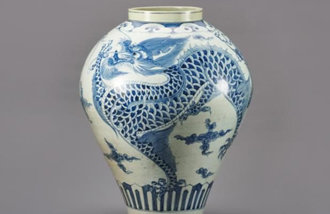[Editorial] Stay Away from Politics Addiction and Focus on Increasing Investment
[Editorial] Stay Away from Politics Addiction and Focus on Increasing Investment
Posted August. 25, 2005 02:59,
From today, the Roh Moo-hyun administration starts the second half of its tenure. It is time to mind the peoples livelihoods, leaving behind the governments self-praise and public criticism of the management of state affairs in the first half. President Roh still emphasizes coalition and a change of the electoral system, and his aides claim that resolving regional structure is the most urgent issue. But the majority of the public do not agree. A large-scale joint survey by the government and the private sector would confirm that.
If the administration fails to hear the public outcry that the economy is the issue, the participatory government should be interpreted as a government of a handful of people participating in the administration. If President Roh, his aides, and the ruling Uri Party do not want to remain a participatory government between ourselves, they should stay away from politics addition and place the economy at the center of the national agenda. That does not mean a repeated claim of focusing on the economy when the administration feels the need to change the situation after dividing the national opinion with political agendas that cannot contribute even the slightest bit to the peoples livelihoods. The national economy and peoples livelihoods are not a kind of gambling in which the administration can hit the jackpot by occasionally going all-in.
Moreover, problems that the countrys economy is facing are not so simple ones that can be solved by temporarily dropping housing prices through imposing high taxes on those who own homes valued at greater than 600 million won. Even if housing and land prices stabilize to a degree thanks to the real estate measures that the government is expected to introduce late this month, the economic problems will not be solved at once. President Roh said, I will personally take care of real estate issue. This might enhance the effect of political symbolism, but that can never necessarily lead to economic recovery. In fact, the real estate measure is similar to passing the disease and offering the remedy.
In order to actually revitalize the economy, the right order and method is to grow national wealth by boosting the growth potential, short-term or mid-to-long-term, and improve distribution based on the increased national wealth. If that becomes the focus, the most urgent task is to vitalize investment by private companies. Only when the countrys companies aggressively invest in facilities can the country revitalize the current economy and offer prospects of future growth. If the government and companies turn a blind eye to facility investment, blaming each other, the economic recession will be prolonged and growth potential will be further compromised. If that happens, the country will suffer endless conflict and division, failing to lift itself from per capita income in the $10,000-range which has lasted for 10 years.
The Korea Institute for International Economic Policy (KIEP) estimated this years growth rate of Japanese firms facility investment at 11.6 percent. That is reportedly the highest level ever since 1991. The specific content of investment is also very good. Manufacturing investment focuses on increasing the capacity of new cars, sophistication of products, and increasing the production of super-thin displays. The most declared purpose of investment is growth of production capacity, followed by development of new products. This shows that the Japanese economy is preparing for future growth.
By contrast, Korea Development Institute (KDI) predicts Koreas facility investment growth rate for this year at 6.3 percent, half the level of Japan. Samsung Economic Research Institute analyzes that 45 percent of the investment executed in the first half was for renovation of the existing facilities and that investment for fresh facilities accounted for a mere 25 percent. The annual average growth rate of facility investment since 2001 stood at 0.3 percent. Small-and-medium-sized companies are engaged in overseas investment in search of cheap labor rather than domestic investment. Large companies just keep their stockpile of cash.
For sure, the reason for sluggish investment does not entirely lie with restrictions. Lack of entrepreneurship and avoidance of research and development investment can be other reasons. However, the governments accusation of companies produces the side effect of shrinking companies investment sentiment. Korea is not in a position to be engaged in domestic feud when the governments and companies of its Asian competitors are joining forces. It was reported that Singapore posted 10.8 percent of annual facility investment growth rate during the period when its per capita income grew from $10,000 to $20,000. The figure was 7.4 percent in Japan. This explains that facility investment decides the success of joining the ranks of advanced countries.
The government must address the stumbling blocks to investment, putting itself in the shoes of business leaders. Revitalization of investment cannot be expected in a situation of high land prices and a cobweb of restrictions. Businessmen will also be left behind in a global competition, if they remain complacent about the level of investment that just mends the existing facilities. Economic development through vitalization of facility investment is the biggest national task.







